Imagine stepping into a bustling Mexican market, filled with vibrant colors, enticing aromas, and the sounds of sizzling pans. As you navigate through the maze of food stalls, your senses are overwhelmed by the sheer variety of traditional dishes on offer. From savory tacos al pastor to rich mole poblano, Mexican cuisine is a treasure trove of culinary delights that reflect its diverse cultural heritage.
In this article, we will delve into the rich tapestry of traditional Mexican dishes and explore their significance in preserving the country’s culinary legacy. By examining one specific case study – the iconic dish of chiles en nogada – we will uncover how these traditional recipes encapsulate centuries-old traditions and represent an integral part of Mexico’s national identity. Through understanding the historical context and ingredients used in these dishes, we can gain insight into the intricate flavors and techniques that have been passed down from generation to generation. Join us as we embark on a gastronomic journey through Mexico’s rich cultural tapestry and discover why its traditional dishes continue to captivate taste buds around the world.
Mexican Food’s Culinary Heritage: Enchiladas
Imagine yourself sitting in a vibrant Mexican restaurant, surrounded by the enticing aroma of spices and sizzling pans. As you peruse the menu, your eyes fixate on one dish that stands out among the rest – enchiladas. This traditional Mexican delicacy has gained worldwide popularity for its unique flavors and rich cultural significance. In this section, we will explore the culinary heritage behind enchiladas, exploring their origins, ingredients, and diverse regional variations.
Enchiladas are believed to have originated in Mexico during the Mayan civilization, where corn tortillas were filled with various ingredients and rolled before being covered in chili sauce. This method of preparing food quickly spread throughout Mesoamerica and became an integral part of Mexican cuisine. Today, enchiladas continue to be cherished as a staple dish across Mexico and beyond.
The key components of enchiladas include corn tortillas, fillings such as meat or cheese, and a variety of sauces made from chilies. The combination of these elements creates a harmonious blend of textures and flavors that tantalize the taste buds. Each region in Mexico takes pride in its own unique twist on enchiladas; while some prefer red chili sauce enriched with tomatoes and spices, others opt for green chili sauce made from fresh tomatillos and cilantro.
To truly appreciate the significance of enchiladas within Mexican culture, let us consider four emotional responses they evoke:
- Nostalgia: For many Mexicans living abroad or those who grew up enjoying home-cooked meals, eating enchiladas can transport them back to their childhood memories.
- Comfort: Enchiladas offer warmth both literally and metaphorically—the perfect comfort food after a long day or during times when solace is sought.
- Pride: Enchiladas serve as a symbol of national identity—a reminder of Mexico’s rich culinary heritage passed down through generations.
- Celebration: Enchiladas are often enjoyed during festive occasions, bringing people together to share laughter and joy.
In addition to the emotional connection they evoke, enchiladas also showcase Mexico’s culinary diversity. The following table highlights four regional variations of enchiladas:
| Region | Sauce | Filling |
|---|---|---|
| Veracruz | Red chili sauce | Seafood |
| Oaxaca | Mole sauce | Chicken or cheese |
| Puebla | Pipian sauce | Pork or vegetables |
| Sonora | Salsa verde | Beef |
With its fascinating origins, diverse ingredients, and ability to stir deep emotions within those who indulge in it, enchiladas encapsulate the essence of Mexican cuisine. As we continue our exploration of Mexican Food’s Culinary Heritage, let us now turn our attention to another beloved dish – Chiles Rellenos.
Mexican Food’s Culinary Heritage: Chiles Rellenos
Continuing our exploration of Mexican Food’s Culinary Heritage, let us now turn our attention to another iconic dish – Chiles Rellenos. To illustrate the significance and appeal of this dish, we will examine a case study involving a family-owned restaurant in Mexico City that has been serving traditional Chiles Rellenos for generations.
Imagine stepping into “La Cocina de la Abuela,” a cozy restaurant tucked away in the heart of Mexico City. As you enter, your senses are immediately captivated by the aroma of spices wafting through the air. The friendly staff welcomes you, inviting you to indulge in their renowned Chiles Rellenos. This classic Mexican dish consists of roasted poblano peppers stuffed with various fillings such as cheese, meat, or vegetables, then battered and fried to crispy perfection.
Why have Chiles Rellenos become an enduring favorite among locals and tourists alike? Let us explore some reasons:
- Bursting flavors: The combination of smoky poblanos, savory fillings, and tangy tomato sauce creates a harmonious explosion of flavors that dance on your taste buds.
- Versatility: From vegetarian options filled with gooey melted cheese to meat-filled variations like shredded chicken or ground beef, there is something to satisfy every palate.
- Visual delight: The vibrant colors of the golden-brown batter encasing the green chiles make for an enticing presentation that delights both the eyes and appetite.
- Cultural significance: Chiles Rellenos encapsulate the essence of Mexican cuisine – a fusion of indigenous ingredients and European influences brought about by centuries-old traditions.
To further understand the historical context behind this beloved dish, consider the following table showcasing key events related to its development:
| Year | Event |
|---|---|
| 16th century | Arrival of Spanish conquistadors introduces new cooking techniques and ingredients |
| 18th century | Poblano peppers become a staple in Mexican cuisine |
| Early 20th century | Chiles Rellenos gain popularity as a traditional festive dish |
| Present day | Variations of Chiles Rellenos are embraced globally, adapting to local tastes |
As we conclude our discussion on Chiles Rellenos, it is clear that this culinary gem holds a special place in the hearts and palates of people worldwide. It serves as a testament to Mexico’s rich gastronomic heritage, showcasing the country’s ability to create dishes that both honor tradition and adapt to evolving tastes.
In the subsequent section on “Mexican Food’s Culinary Heritage: Pozole,” we will continue our exploration by delving into another iconic Mexican dish that has stood the test of time.
Mexican Food’s Culinary Heritage: Pozole
Imagine walking through the bustling streets of Mexico City, inhaling the tantalizing aromas wafting from street food vendors. One dish that stands out among the vibrant array of options is pozole. This traditional Mexican stew has deep roots in the country’s culinary heritage and offers a unique combination of flavors and textures.
Pozole traces its origins back to pre-Columbian times when it was consumed as a ceremonial dish by the Aztecs. Today, this savory soup continues to be enjoyed across Mexico during special occasions or simply as a comforting meal on chilly evenings. The preparation varies from region to region, but typically includes hominy corn kernels simmered with tender meat (such as pork or chicken), aromatic spices, and fresh herbs.
When you take your first spoonful of pozole, several elements come together to create an explosion of taste. Here are some key characteristics that make this dish so beloved:
- Richness: The slow-cooked broth forms the heart of pozole, infusing every bite with rich flavor.
- Texture: The softness of the hominy corn provides a delightful contrast against the tender chunks of meat.
- Heat: A touch of spiciness adds depth to the dish, leaving a warm sensation lingering on your palate.
- Toppings: Traditional garnishes like shredded cabbage, radishes, lime juice, and cilantro contribute freshness and crunch.
To fully appreciate the diverse regional variations of pozole, consider this comparison table showcasing four different styles found across Mexico:
| Style | Region | Key Ingredients |
|---|---|---|
| Blanco | Jalisco | Pork shoulder, garlic, oregano |
| Verde | Guerrero | Chicken thighs, green tomatoes, pumpkin seeds |
| Rojo | Sinaloa | Beef tripe, guajillo chilies, hominy corn |
| Pozole de Mar | Baja California | Shrimp, fish, clams, lime juice |
As you savor a bowl of pozole and explore its regional variations, you not only immerse yourself in Mexico’s culinary traditions but also gain insight into the country’s cultural diversity. The rich history behind each spoonful serves as a reminder of how food can be a conduit for heritage and identity.
Transitioning seamlessly into the next section about “Mexican Food’s Culinary Heritage: Mole,” we delve deeper into another iconic dish that showcases the complexity and depth of Mexican cuisine.
Mexican Food’s Culinary Heritage: Mole
Following our exploration of the traditional Mexican dish, Pozole, we now turn our attention to another iconic culinary masterpiece that exemplifies Mexico’s rich gastronomic heritage: mole. Imagine being transported back in time to a small pueblo nestled within the vibrant state of Oaxaca. Picture yourself sitting at a rustic wooden table, eagerly awaiting a plate filled with tender chicken smothered in a velvety sauce bursting with complex flavors and aromas. This is the enchanting experience that mole offers.
Mole, derived from the Nahuatl word “molli,” meaning sauce or concoction, is a unique blend of indigenous ingredients and Spanish influences. The exact origins of mole remain shrouded in mystery, but its significance as a cultural symbol cannot be overstated. From elaborate family gatherings to festive celebrations like weddings and quinceañeras, mole takes center stage on special occasions throughout Mexico.
To truly appreciate the intricate nature of mole, let us delve into its key components:
- Chiles: A medley of chiles forms the backbone of this exquisite sauce. Ranging from mild to fiery hot varieties such as ancho, pasilla, mulato, and chipotle, these chiles contribute distinct flavors and levels of heat.
- Spices: An array of spices adds depth and complexity to mole. Ingredients like cinnamon, cloves, coriander seeds, and cumin provide warmth and earthiness while enhancing the overall flavor profile.
- Nuts and Seeds: To enrich both texture and taste, roasted nuts such as almonds or peanuts are combined with sesame seeds or pumpkin seeds. These additions bring forth creamy undertones and impart a delightful crunch.
- Chocolate: Perhaps one of the most surprising elements found in certain types of mole is chocolate. Its bitter sweetness harmonizes with other ingredients to create an irresistibly smooth finish.
As illustrated by this compelling combination of ingredients, mole is a testament to the culinary ingenuity of Mexican cuisine. To further illustrate its significance, consider the following table that showcases four distinct types of mole and their predominant characteristics:
| Mole Type | Region | Key Ingredients |
|---|---|---|
| Mole Poblano | Puebla | Chocolate, dried chiles, nuts |
| Coloradito | Oaxaca | Ancho chiles, tomatoes, spices |
| Amarillo | Central Mexico | Yellow chiles, garlic, cloves |
| Negro | Oaxaca | Blackened chiles, plantains, peanuts |
These tantalizing varieties represent just a fraction of the diverse range of moles found throughout Mexico. Each type has its own unique combination of flavors and ingredients that reflects regional traditions and local preferences.
In exploring the captivating world of mole, we have uncovered an extraordinary dish steeped in cultural heritage and deeply intertwined with the fabric of Mexican society. As we move forward on our gastronomic journey through traditional Mexican cuisine, let us now turn our attention to another beloved classic: enchiladas.
Enchiladas: A Classic Mexican Dish
Imagine yourself sitting in a vibrant Mexican restaurant, surrounded by the rich aromas of spices and sizzling meats. As you peruse the menu, your eyes are immediately drawn to the section dedicated to traditional dishes. Among them, enchiladas stand out as one of Mexico’s most beloved culinary creations.
Enchiladas can be traced back centuries, with various regional variations that have evolved over time. To understand their significance, let us delve into the origins and components of this classic dish.
Enchiladas typically consist of tortillas filled with a variety of ingredients such as meat, cheese, or vegetables before being rolled up and smothered in a flavorful sauce. The sauce is an integral part of what makes enchiladas truly special; it adds depth and complexity to every bite. Common sauces include salsa roja (red sauce), salsa verde (green sauce), or mole, each offering its own distinct flavor profile.
To fully appreciate the cultural importance of enchiladas in Mexican cuisine, consider the following:
- Enchiladas showcase the diverse range of flavors found across Mexico’s regions.
- They serve as a vehicle for local ingredients like chili peppers, tomatoes, avocados, and cilantro.
- This popular dish often brings families together during celebratory occasions and holidays.
- It has also gained international recognition, becoming a staple on menus far beyond Mexico’s borders.
Embracing tradition while embracing innovation – that is the essence of Mexican cuisine. Let us now turn our attention to another iconic dish that exemplifies this ethos: Chiles Rellenos – Stuffed Peppers at Their Best.
| Dish | Region | Key Ingredients |
|---|---|---|
| Mole Poblano | Puebla | Chocolate, chilies |
| Carnitas | Michoacán | Pork, orange juice |
| Tacos al Pastor | Mexico City | Marinated pork, pineapple |
| Cochinita Pibil | Yucatán | Slow-roasted pork, achiote |
As we explore the culinary heritage of Mexican food further, let us now delve into the realm of Chiles Rellenos. This iconic dish showcases yet another facet of Mexico’s rich gastronomic tapestry – one that combines both tradition and innovation in its preparation.
Chiles Rellenos: Stuffed Peppers at Their Best
Having explored the flavorsome world of enchiladas, we now turn our attention to another iconic dish that showcases Mexico’s rich culinary heritage – chiles rellenos. Renowned for their vibrant colors and tantalizing taste, these stuffed peppers have become a staple in Mexican cuisine.
To illustrate the enduring popularity and cultural significance of chiles rellenos, let us consider the case study of Maria, a passionate cook who grew up in Guadalajara, Mexico. From an early age, Maria learned to prepare this cherished family recipe handed down through generations. The process involved selecting plump poblano peppers from local markets, roasting them over an open flame until charred, carefully peeling off the skin while preserving the pepper’s shape, and stuffing it with a delectable combination of cheese or meat filling before frying it to perfection.
This beloved dish has captivated food enthusiasts worldwide due to several key characteristics:
- Bursting with Flavors: The mild heat of roasted poblanos combined with savory fillings creates a harmonious blend of tastes that lingers on one’s palate.
- Textural Delight: The contrast between the smoky exterior and creamy interior offers a delightful play on textures.
- Visual Appeal: Vibrant colors make chiles rellenos visually striking; each serving is akin to an edible work of art.
- Versatility: Chiles rellenos can be adapted to various dietary preferences by using alternative fillings such as vegetables or tofu.
Emotional bullet point list (Markdown format):
Here are some reasons why chiles rellenos evoke feelings of joy and satisfaction:
- The anticipation of biting into a crispy golden exterior, revealing the oozing melted cheese inside.
- The aroma that fills the kitchen as the peppers roast over an open flame.
- Memories of family gatherings where laughter and love were shared around a steaming plate of chiles rellenos.
- The pride felt when successfully recreating this traditional dish, connecting us to Mexican culture.
Emotional table (Markdown format):
| Reasons | Emotions |
|---|---|
| Nostalgia | Warmth |
| Culinary heritage | Pride |
| Comfort food | Contentment |
| Exploration of new flavors | Excitement |
With its rich history and ability to evoke a range of emotions, chiles rellenos continue to be cherished by people worldwide. As we delve further into Mexico’s culinary repertoire, let us now explore another iconic dish: pozole – a hearty Mexican soup that warms both body and soul.
As we embark on our next gastronomic journey, let us immerse ourselves in the world of pozole—a beloved Mexican soup known for its comforting qualities.
Pozole: A Hearty Mexican Soup
Building on the rich flavors of chiles rellenos, another traditional Mexican dish that embodies the country’s culinary heritage is pozole—a hearty soup enjoyed throughout Mexico. With its origins dating back to pre-Hispanic times, this dish continues to be cherished by both locals and visitors alike for its distinct taste and cultural significance.
Pozole is a versatile dish that varies in preparation across different regions of Mexico. For instance, in the state of Guerrero, red pozole is commonly made with pork meat and seasoned with dried chili peppers such as guajillo or ancho. In contrast, white pozole from Jalisco typically features chicken as its main protein source. Regardless of variations in ingredients, one can expect a steaming bowl of pozole to offer a harmonious blend of flavors—spicy yet balanced by the natural sweetness of corn kernels.
To delve deeper into the essence of this beloved soup, let us explore some key aspects of pozole:
-
Cultural Significance:
- Pozole holds significant cultural importance in Mexico as it has been associated with celebrations and special occasions for centuries.
- Often served during festivities like Independence Day or Día de los Muertos (Day of the Dead), it symbolizes unity and community bonding.
-
Nutritional Value:
- Besides being delicious, pozole offers several nutritional benefits.
- It contains essential nutrients like protein from meat or legumes, vitamins from vegetables, and carbohydrates from hominy corn—the star ingredient.
-
Regional Variations:
- As mentioned earlier, every region in Mexico boasts their own version of pozole.
- Each variation reflects local preferences and available resources, highlighting the diversity within Mexican cuisine.
-
Cooking Techniques:
- Preparing authentic pozole requires time and patience.
- The use of traditional cooking methods such as simmering meats over low heat allows flavors to develop fully while ensuring tenderness.
In summary, pozole encapsulates the essence of Mexican culinary heritage through its historical significance, diverse regional variations, and nutritional value. This beloved soup continues to be a staple in Mexican households and a testament to the country’s rich gastronomic traditions.
With an understanding of pozole’s cultural importance and flavorsome appeal, let us now explore another iconic Mexican dish that showcases the complexity of traditional flavors—mole: a rich and complex sauce.
Mole: A Rich and Complex Sauce
Transitioning from the previous section on Pozole, we now delve into another iconic traditional dish of Mexican cuisine: Mole. Known for its rich and complex flavors, Mole is a versatile sauce that has become an essential part of Mexican culinary heritage.
Imagine yourself sitting in a quaint restaurant in Oaxaca, Mexico, where the aroma of spices fills the air. As you peruse the menu, your eyes catch sight of a tantalizing plate of chicken smothered in a thick brown sauce called mole poblano. Intrigued by this intriguing combination of ingredients, you decide to give it a try. This case study serves as an excellent example showcasing the allure and complexity of Mole.
Mole comes in various regional variations across Mexico, each offering its unique twist on this beloved dish. However, there are some key characteristics that define Mole:
- Complexity: Mole is renowned for its intricate blend of flavors resulting from the harmonious marriage of numerous ingredients such as chili peppers, chocolate or cocoa powder, nuts (such as almonds or peanuts), herbs, spices (including cinnamon and cloves), and even fruits like plantains or raisins.
- Time-consuming preparation: Crafting authentic mole involves patience and dedication due to the lengthy process required to prepare it properly. It often includes grinding roasted ingredients together with precise measurements to achieve the perfect balance of taste and consistency.
- Versatility: While traditionally served over poultry dishes such as chicken or turkey, mole can also be used with meats like beef or pork, adding depth and richness to any meal. Additionally, vegetarian versions have gained popularity among those seeking meat-free alternatives without compromising flavor.
- Symbolism: Beyond its culinary significance alone, mole carries cultural symbolism within Mexican society. Its extensive list of ingredients represents the fusion of indigenous traditions with Spanish influences during colonial times—a testament to Mexico’s diverse history.
To further illustrate these characteristics visually:
| Flavor Profile | Preparation Method | Main Ingredients | Notable Region |
|---|---|---|---|
| Rich and complex | Time-consuming and labor-intensive | Chili peppers, chocolate, nuts, herbs, spices | Oaxaca |
| Spicy with a hint of sweetness | Grinding roasted ingredients together to form a smooth sauce | Chili peppers, cinnamon, cloves, raisins | Puebla |
| Earthy and smoky | Slow cooking in clay pots over an open fire | Ancho chili peppers, avocado leaves, tomatoes | Tlaxcala |
As we explore the history of enchiladas in the subsequent section, it is important to recognize that Mole has paved the way for numerous Traditional Mexican Dishes. Its complexity and cultural significance continue to captivate palates around the world.
Continuing our journey through Mexico’s culinary heritage brings us to another beloved dish—the enchanting realm of enchiladas.
Exploring the History of Enchiladas
Transitioning smoothly from the previous section on Mole, we now delve into the captivating history and flavors of another iconic Mexican dish: Enchiladas. In order to better understand the significance of enchiladas in Mexican cuisine, let us consider a hypothetical case study involving Maria, a culinary enthusiast who embarks on a journey to explore the diverse regional variations of this beloved traditional dish.
Enchiladas are known for their versatility as well as their cultural importance within Mexico. From the vibrant streets of Mexico City to the coastal regions of Veracruz, Maria discovers that enchiladas come in many forms, each with its own distinct flavor profiles and accompaniments. Whether it be enchiladas verdes smothered in tangy green salsa or enchiladas suizas topped with creamy white sauce, these delicious tortilla-based creations never fail to captivate both locals and foreigners alike.
To truly grasp the essence of enchilada culture, let us examine some key aspects that contribute to its rich heritage:
-
Regional Variations: Just like any other traditional dish, enchiladas vary greatly depending on the region they originate from. For instance:
- In northern Mexico, particularly Chihuahua and Sonora, enchiladas often feature flour tortillas instead of corn tortillas.
- The Yucatán Peninsula takes pride in its unique cochinita pibil enchiladas, which showcase slow-roasted pork marinated in achiote paste.
- In Oaxaca, black mole is frequently used as a topping for enchiladas de mole negro.
-
Filling Options: Another fascinating aspect of enchiladas lies within the wide array of fillings available. Some popular choices include shredded chicken tinga, sautéed vegetables like zucchini or spinach with cheese, or even seafood such as shrimp or fish.
-
Accompaniments and Garnishes: Enchiladas are often accompanied by traditional side dishes like refried beans, Mexican rice, and vibrant salsas. Maria discovers that garnishes such as diced onions, crumbled queso fresco, sliced avocado, and chopped cilantro add an extra layer of freshness and flavor.
To further illustrate the diversity within enchilada culture, let us consider a table showcasing some regional variations:
| Region | Popular Enchilada Variation | Notable Ingredients |
|---|---|---|
| Mexico City | Enchiladas Rojas | Guajillo chiles, ground beef |
| Veracruz | Enchiladas de Mariscos | Seafood medley (shrimp, fish) |
| Puebla | Enmoladas | Mole sauce, chicken |
| Yucatán | Papadzules | Hard-boiled eggs, pumpkin seed sauce |
As Maria’s culinary journey comes to an end with her newfound appreciation for enchiladas’ cultural significance in Mexico, she eagerly moves on to unraveling the secrets behind another beloved dish: Chiles Rellenos. By exploring the complexities of this stuffed chili pepper delicacy, she hopes to uncover yet another fascinating chapter in Mexican food history.
Unraveling the Secrets of Chiles Rellenos
From the rich history of enchiladas, we now turn our attention to another iconic Mexican dish: chiles rellenos. Imagine sinking your teeth into a perfectly crisp and golden battered poblano pepper, only to be met with a burst of flavors from the savory filling nestled inside. This delectable creation showcases both the versatility of Mexican cuisine and its ability to elevate simple ingredients into culinary masterpieces.
Chiles rellenos have been enjoyed in Mexico for centuries, with variations found across different regions of the country. The origins of this dish can be traced back to indigenous cultures that cultivated peppers long before Spanish colonization. Over time, as new ingredients were introduced, chiles rellenos evolved into what they are today – a beloved staple on menus throughout Mexico and beyond.
One cannot discuss chiles rellenos without acknowledging the key components that contribute to their distinct taste and texture:
- Poblano Peppers: These mild chili peppers provide the perfect vessel for stuffing. Their thick flesh holds up well during cooking and imparts a subtle kick of heat.
- Filling Options: From traditional cheese fillings like queso fresco or Oaxaca cheese to heartier options like ground meat or beans, there is no shortage of choices when it comes to stuffing these peppers.
- Batter Coating: To achieve that irresistible crunch, chiles rellenos are typically coated in an egg batter before being deep-fried until golden brown.
- Sauces and Garnishes: Chiles rellenos are often served with vibrant tomato-based sauces or salsas, adding acidity and brightness to balance out the richness of the dish. Fresh herbs, such as cilantro or parsley, may also be used as garnishes for added freshness.
To fully appreciate the artistry behind chiles rellenos preparation, let’s take a closer look at their flavor profile through a sensory exploration:
| Sensation | Description |
|---|---|
| Texture | The initial crunch of the golden batter gives way to a tender and juicy filling, creating a satisfying contrast. |
| Heat | Depending on the type of pepper used and the fillings chosen, chiles rellenos can pack anywhere from a gentle warmth to an intense spiciness that lingers on the palate. |
| Flavor | The smoky aroma of roasted peppers mingles with the richness of melted cheese or seasoned meat, resulting in a harmonious blend of flavors that is both comforting and indulgent. |
| Visual | Aesthetically pleasing, chiles rellenos delight the eyes with their vibrant colors – green peppers contrasting against golden exteriors and vibrant red sauces drizzled atop. |
Incorporated into countless family gatherings and festive celebrations, chiles rellenos have become more than just a dish; they are a symbol of Mexican culinary heritage. With each bite, one can taste centuries’ worth of tradition encapsulated within this beloved creation.
Through exploring these traditional dishes like enchiladas and chiles rellenos, we gain not only insight into Mexico’s rich gastronomic history but also an appreciation for its ability to transform humble ingredients into extraordinary works of art. Let us now delve further into the intricacies behind another iconic dish: tacos al pastor.



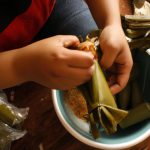
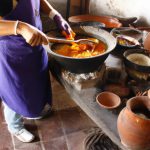

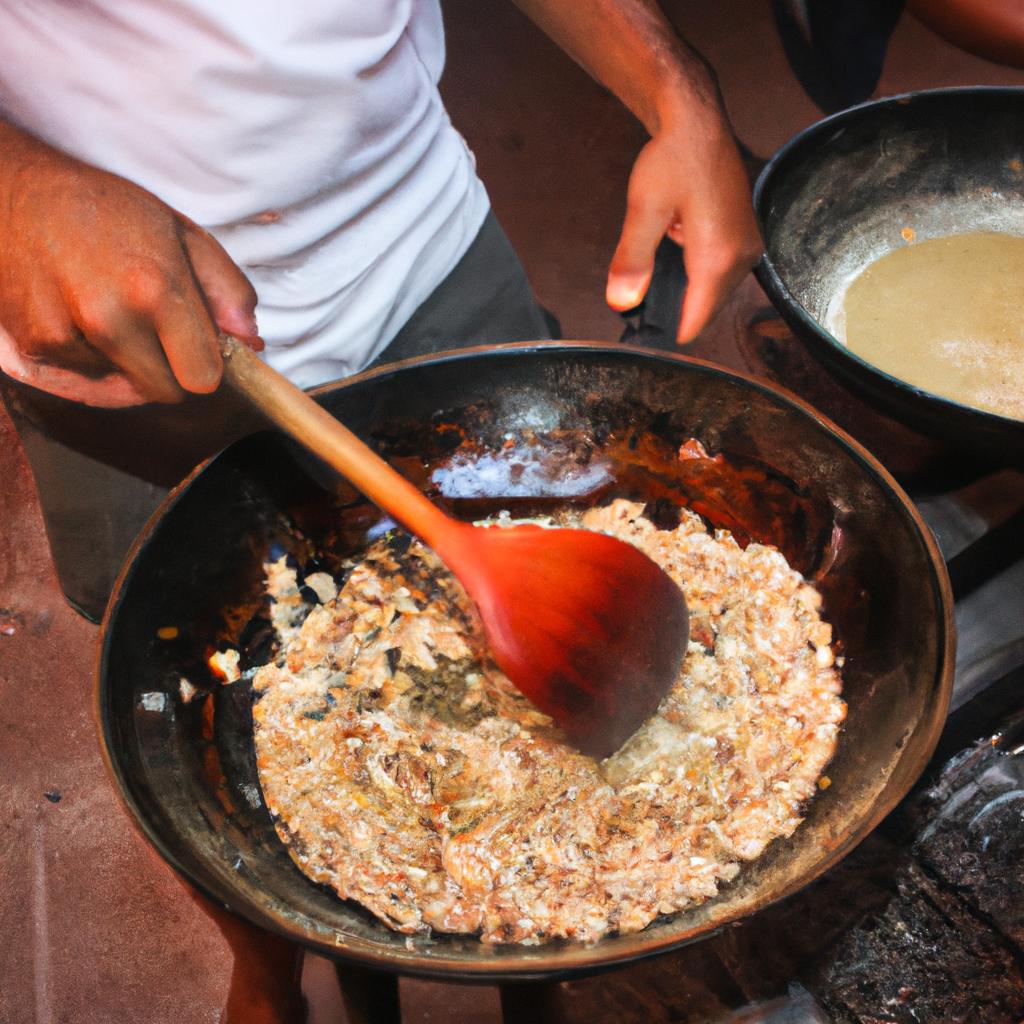

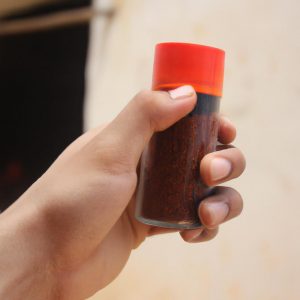
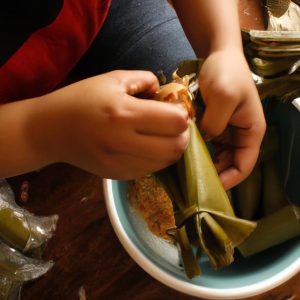
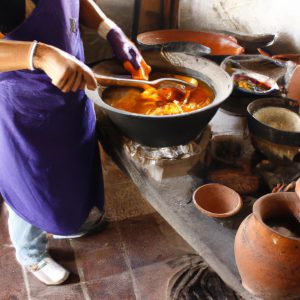
More Stories
The Essence of Mole: A Delightful Exploration of Traditional Mexican Food
Chiles Rellenos: A Traditional Mexican Delicacy
The Delightful Dish: Pozole: A Traditional Mexican Food